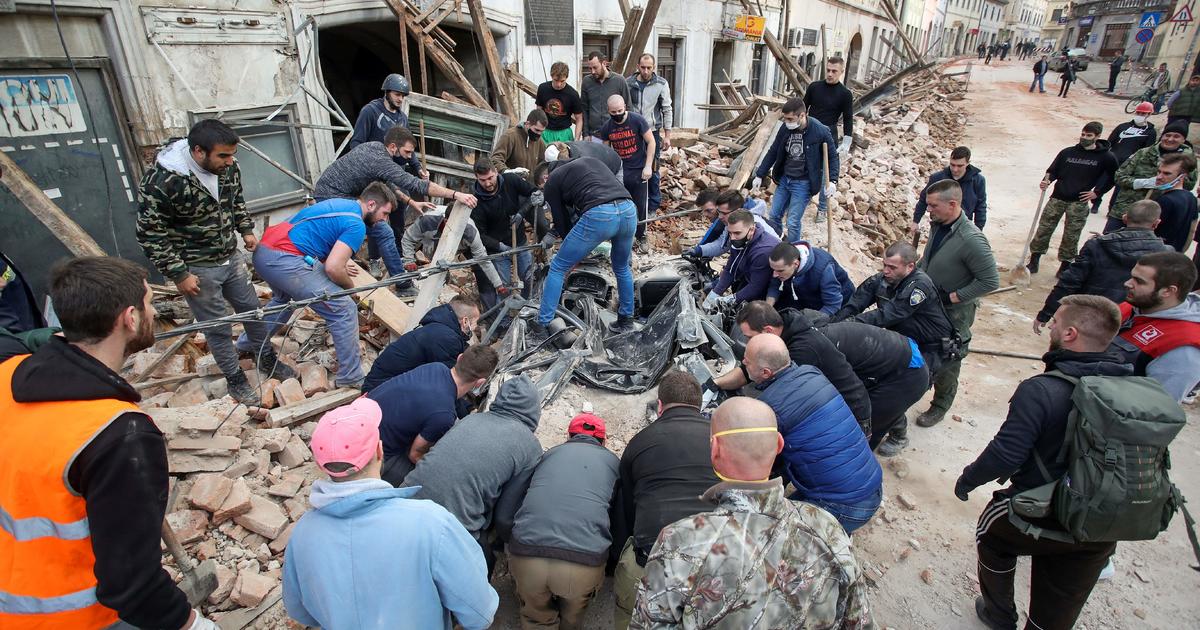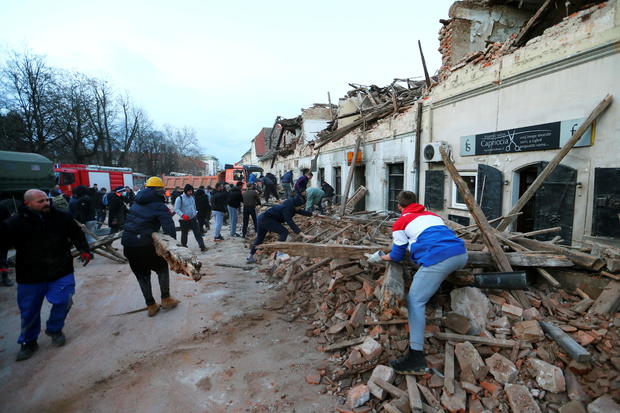
A strong earthquake in Croatia destroyed buildings and killed at least seven people on Tuesday southwest of the capital, displacing dozens of residents in the area or making them afraid to sleep inside, while emergency teams searched for those still missing at nightfall.
The European Mediterranean Seismological Center said the 6.3-magnitude quake occurred 28 miles southeast of Zagreb just before 12:20 p.m. local time. It caused widespread damage in the most affected city, Petrinja. The same area was hit on Monday by a 5.2 magnitude earthquake.
Officials said a 12-year-old girl died in Petrinja, a town of about 25,000 people. Six other people were killed in nearly destroyed villages near the city, according to state television HRT. At least 26 people were hospitalized, six with serious injuries, officials said, adding that several people remained unidentified.
In Petrinja, cries could be heard from under the destroyed houses. A woman was found alive about four hours after the quake. Emergency crews used rescue dogs to search for the survivors, while family members looked desperately.
“My city has been completely destroyed. We have dead children,” Petrinja Mayor Darinko Dumbovic said in a statement broadcast by HRT. “It’s like Hiroshima – half the city doesn’t exist anymore.”
Firefighters worked to remove debris from a collapsed building that fell on a car. A man and a boy were eventually rescued from the vehicle and transported in an ambulance.
The city was left without electricity or running water, while officials rushed to arrange temporary accommodation for all displaced residents in need. Residents who feared another earthquake seemed ready to spend the night outside their homes.
Marica Pavlovic, a resident of Petrinja, said the quake felt “worse than a war.”
“It was horrible, a shock. You don’t know what to do if you run away or hide somewhere,” she told The Associated Press.
ANTONIO BRONIC / REUTERS
Croatian Prime Minister Andrej Plenkovic and other government ministers arrived in Petrinja after the earthquake.
“Most of the center of Petrinja is in a red zone, which means that most of the buildings are not usable,” Plenkovic said.
He said the army has 500 places in the barracks ready to house people, while others will be accommodated in hotels and other places nearby.
“No one should be out in the cold tonight,” the prime minister said.
Officials also visited a damaged hospital in the nearby town of Sisak, which was also severely damaged. Plenkovic said patients would be evacuated in military helicopters and ambulances.
Health officials said a baby was delivered to a tent in front of the hospital after the quake.
European Commission President Ursula von der Leyen said on Twitter that she had spoken to Plenkovic and instructed a envoy to travel to Croatia as soon as possible.
As a Mediterranean country, Croatia is prone to earthquakes, but not large ones. The last strong earthquake occurred in the 1990s, when the picturesque village of Ston on the Adriatic coast was destroyed.
DAMIR SENCAR / AFP through Getty
The Croatian army was deployed in the region affected by the earthquake to help with the rescue operation.
Croatian seismologist Kresimir Kuk described the quake as “extremely strong”, much stronger than another that hit Zagreb and nearby areas in the spring. He warned people to avoid potentially unshakable old buildings and move to newer areas of the city because of the aftershocks.
In the capital, people fled the streets in fear.
The quake affected the country and neighboring Serbia, Bosnia and Slovenia. It felt as far away as Graz in southern Austria, the Austria News Agency reported.
Slovenian authorities say the Krsko nuclear power plant has been temporarily shut down following the quake. The plant is jointly owned by Slovenia and Croatia and is located near their border.

